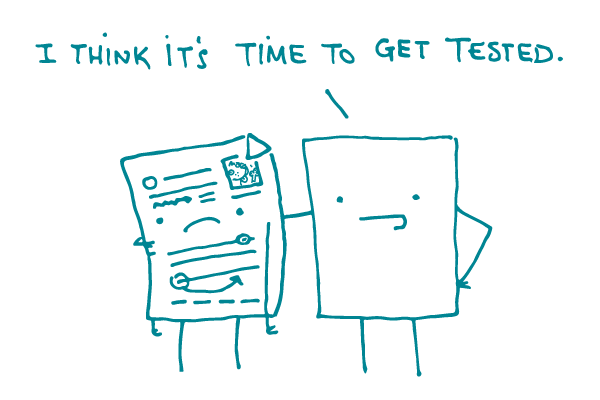
As you know, dear reader, we’re a little obsessed with making online health information understandable and easy to find. That’s why we’ve already shared 2 of our favorite testing methods for web and mobile: Card sorting and tree testing.
Even though technology gets us excited, there’s another medium we just can’t quit: Good, old-fashioned paper. Think of how helpful it is to get a print-out on healthy eating from your doctor that you can just stick on the fridge. Or a stack of educational pamphlets to share with family members about the surgery you need to get.
Since we don’t live in a paperless world quite yet, we need to make sure our print materials are as clear and usable as possible. That’s where testing comes in. By testing a print material, you can identify major obstacles to understanding — and fix those issues before you spend money and time on printing and distribution.
Testing print materials can be quick and budget-friendly, too. Even just asking 2 or 3 people in your target audience can have a big payoff.
Meet with each participant in person, let the participant read over the material, and then ask the following questions:
- What are your overall impressions of this material?
- What do you like/dislike? Why?
- In your own words, what do you think this material is trying to tell you?
- What is this material asking you to do?
- How confident are you that you could do what the material is asking you to do?
- What, if anything, is confusing or hard to understand?
Remember, even if you think the content is clear, your readers may not. Consider asking participants to identify the main message by marking up the material. For example, you can ask them to:
- Underline the most important information
- Cross out the least important information
- Circle anything they find confusing
A few tests will show you areas to improve. And, once you make revisions, you’ll be better equipped to give you readers more “aha!” moments — and fewer head-scratching ones.
The bottom line: Test print materials to learn which messages are unclear or ineffective. Even a few participants can help you find areas to improve.
Browse recent posts